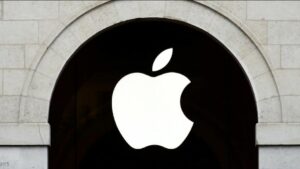According to sources cited by Nikkei on Monday, Tokyo is imposing Apple Inc.’s Japan division 13 billion yen ($97.82 million) in extra taxes for massive sales of iPhones as well as other Apple products to international tourists who’ve been accidentally excluded from the consumption tax.
The paper reported that many Apple stores have detected large-scale purchases of iPhones performed by overseas customers. At least one transaction involved a person acquiring hundreds of smartphones all at once, and the outlet failing to tax at least one suspected reseller.
The 10 per cent sales tax is dropped for visitors to Japan who’s been visiting for less than six months, however, items purchased to resell them are not excused.

According to Nikkei, Apple Japan is reported to have presented a revised tax filing.
The firm merely stated in an email saying tax-exempt sales were not now available at its outlets in reply to a Reuters inquiry for clarification. Its local tax department for Tokyo respond to a request.
On Tuesday, Apple Inc. (AAPL.O) stated that over the recent five years, it had spent more than $100 billion on its Japanese supply chain network. This announcement was made as Tim Cook, the firm’s CEO, toured the hub of the state’s semiconductor industry.
Cook stated on Twitter on Monday that he had gone to visit the Kumamoto prefecture in southwestern Japan, which is home to numerous microprocessor and major technology firms’ plants, including one operated by Taiwan Semiconductor Manufacturing Co (TSMC) is now constructing.
Apple:
Apple Inc. is a leading American technology firm that has headquarters located in Cupertino, California. As per cash flow, Apple is the greatest technological business ( it generated US$365.8 billion in 2021). Steve Wozniak, Steve Jobs, and Ronald Wayne formed Apple as Apple Computer Company on April 1, 1976, to build and distribute Wozniak’s Apple I personal computer.
In 1977, Wozniak and Jobs started the company Apple Computer, Inc. The next system created by the firm, the Apple II, rapidly gained popularity and was among the first microcomputers to be mass-produced. In 1980, Apple decided to go public for immediate economic success.
The company built systems with cutting-edge visual user interfaces, such as the initial Macintosh, which has been presented in a highly successful commercial in 1984. By 1985, challenges with the company’s costly products and management power conflicts had emerged.











